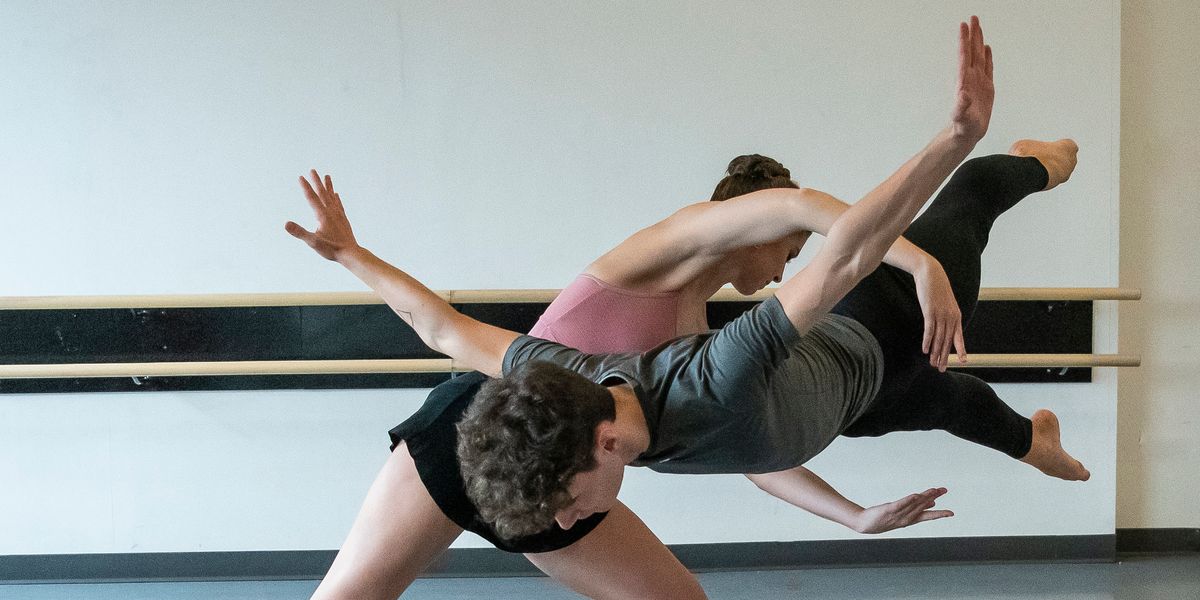Could This Trend Redefine Pre-Professional Training?
For generations, dancers have been thrust into professional life at a young age without much preparation or tools, sinking or swimming on their limited industry know-how. Today, some independent programs are presenting unique models that bridge the gap between student and professional life through networking, performance opportunities and more.
A Career Focus
One of the primary purposes of these pre-professional companies and training programs is to give students an expansive network, and thereby help them land a job. Take New York Dance Project, which offers full-time training for emerging artists and freelance professionals in New York City. According to the group’s founders, former Joffrey Ballet dancers Nicole Duffy Robertson and Davis Robertson, they’ve become a place where companies—from Aspen Santa Fe Ballet to New Chamber Ballet to Parsons Dance—can come in search of new dancers. “Our dancers don’t do cattle-call auditions,” says Duffy Robertson. “They get seen before in company class, or we bring directors in to observe classes.”
Unlike traineeships or apprenticeships that are connected to a larger company, the dancers are not fighting for a single spot, but working together so that each of them can succeed.
These programs often tout perks not typically offered in traditional schools. For example, Z Artists Group, a Manhattan-based, pre-professional training program for middle- and high-school–aged dancers, emphasizes advocacy work, developing skills that will aid dancers in an ever more socially conscious world. And Intrepid Dance Company in Ontario, Canada, a postsecondary training program for commercial dancers, includes seminars in injury prevention, show production, studio ownership, public speaking, choreography and adjudication. Intrepid dancers leave the nine-month course with a professional resumé, video reel, headshot, bio and meetings with agents in Los Angeles and Canada.
Performance Opportunities
Many of these programs have a performance-driven structure that creates a high-stakes, company-like atmosphere within a low-stakes educational environment. Z Artists Group performs five times per year at places like the Guggenheim Museum, the Macy’s Thanksgiving Day Parade and The Joyce Theater. North Carolina Youth Tap Ensemble, a performance troupe of tap dancers ages 8 to 18, performs twice per month, and hasn’t turned down a performance in 37 years. “Sometimes the phone rings off the hook,” says artistic director Gene Medler. “There is no curve later on when these kids get into a professional company. They don’t even flinch.”
Dancers also gain professionalism and connections by working with big names—like Michelle Dorrance at NCYTE, Sarah Lane at NYDP and Mia Michaels at Z Artists Group. “When you have that level of professionalism in the room, they learn what it takes,” Robertson says. “We teach what expectations the director will have for them, what parts they will be responsible to know other than their own, how to pick up choreography quickly.” NYDP tours cities in the eastern U.S. and will be performing in Italy this summer, giving dancers on-the-road experience and survival skills.
Affordability
For dancers looking for stepping-stone training programs, affordability is key. Z Artists Group founder Joelle Cosentino says her program’s tuition is a flat yearly fee based on slashing in half those of local and national suburban dance studios. Some dancers receive scholarship money to cover that cost, and private donors finance the company’s travel. NCYTE is entirely free (including shoes), sustained through money dancers earn performing. “Some days we might do a small half-hour show for $400, and then the next weekend we will have a $4,000 gig,” Medler says.

Who They’re Right For
Though these programs offer compelling alternatives to the traditional training route, they aren’t for everyone. For starters, they exist primarily in cities, which means the cost of living is often high. They also tend to be high-pressure. “This is not a suburban experience,” Cosentino says. “These kids have to be a bit tough.”
And not everyone leaves with a job. At NYDP and Z Artists Group, dancers who don’t receive offers are welcome to stay on a case-by-case basis. “Most have left us with jobs; others have decided they are ready to go back to school or become teachers,” Duffy Robertson says.
Still, these programs offer something unique—and valuable. “A happy, healthy working environment doesn’t happen enough in the dance world,” says Duffy Robertson. “The oldest method is to throw everyone into the same pit and see who is the strongest one to crawl out of it. That is the opposite of what we do.”




